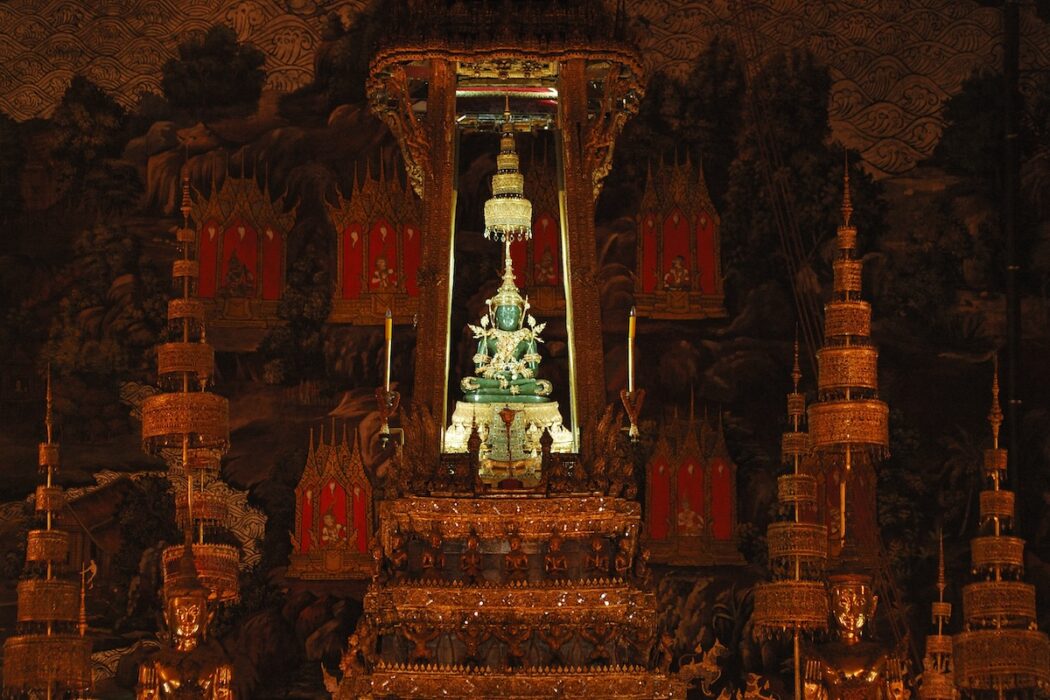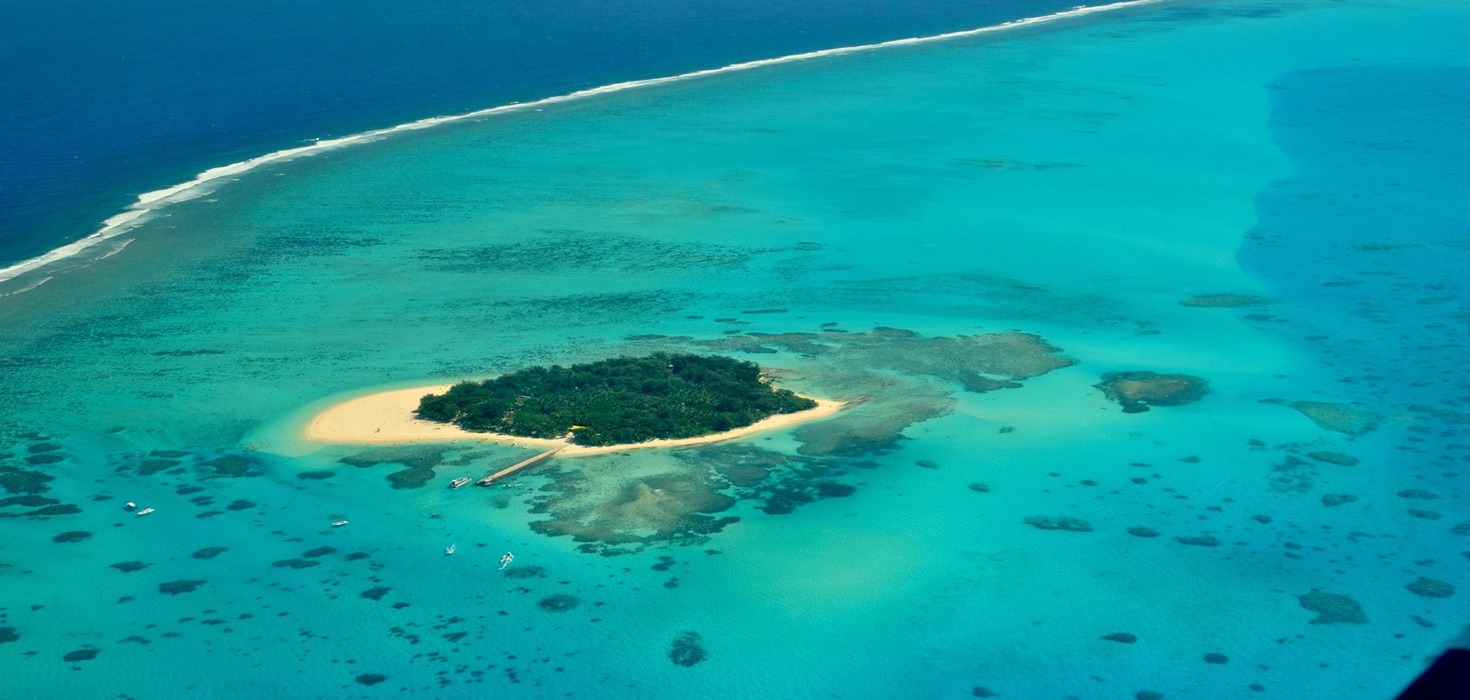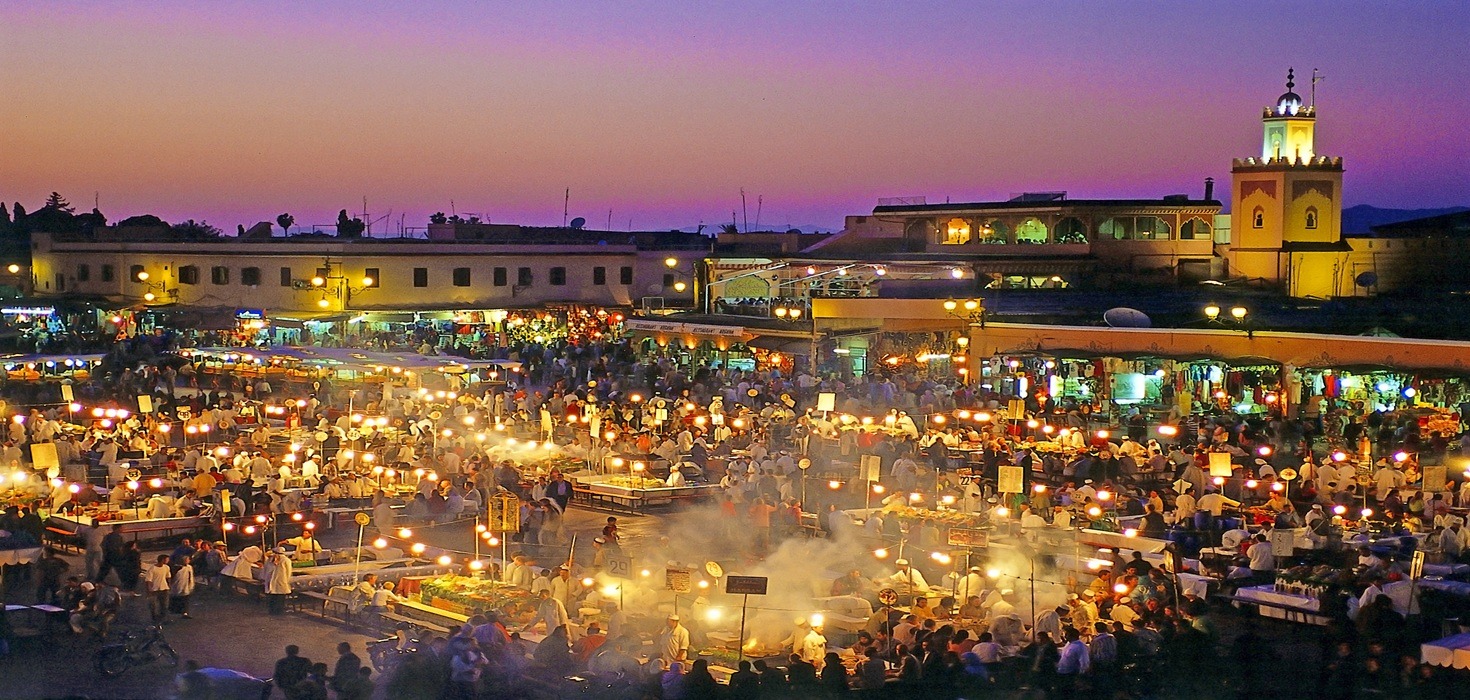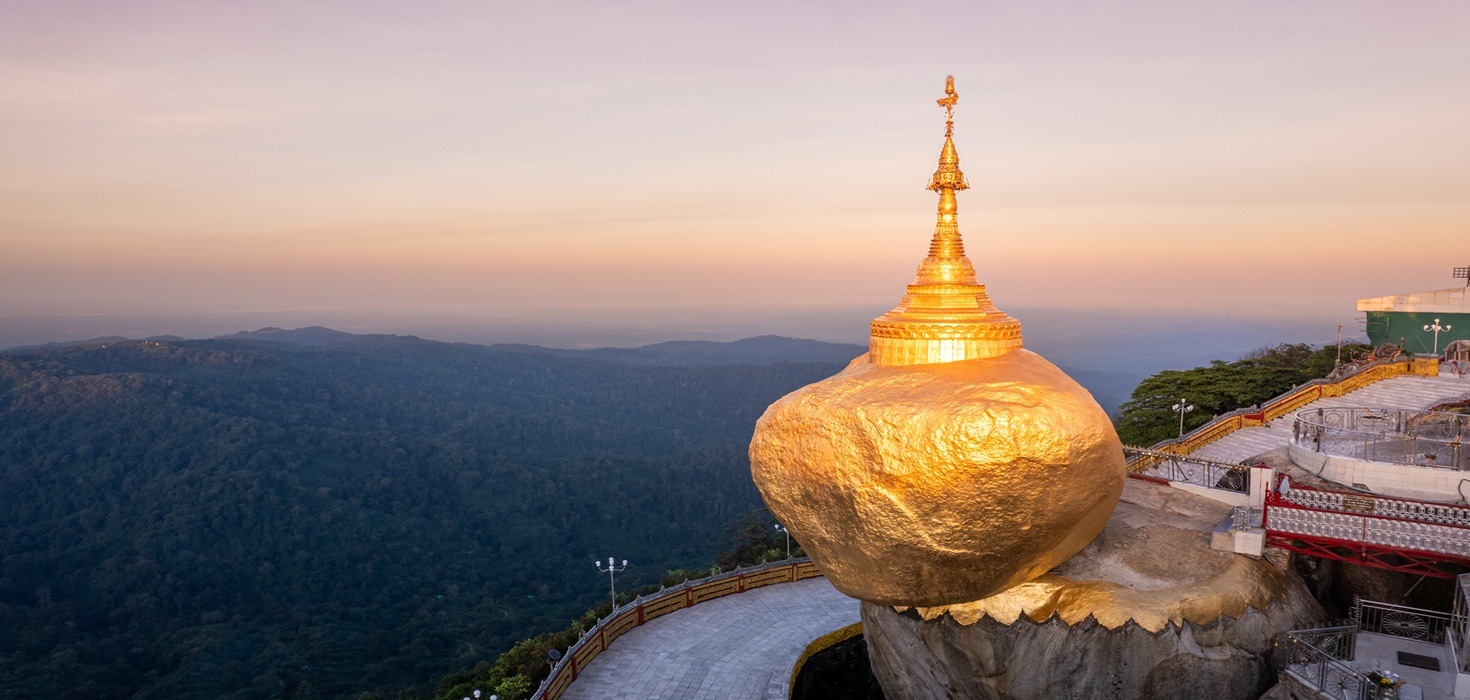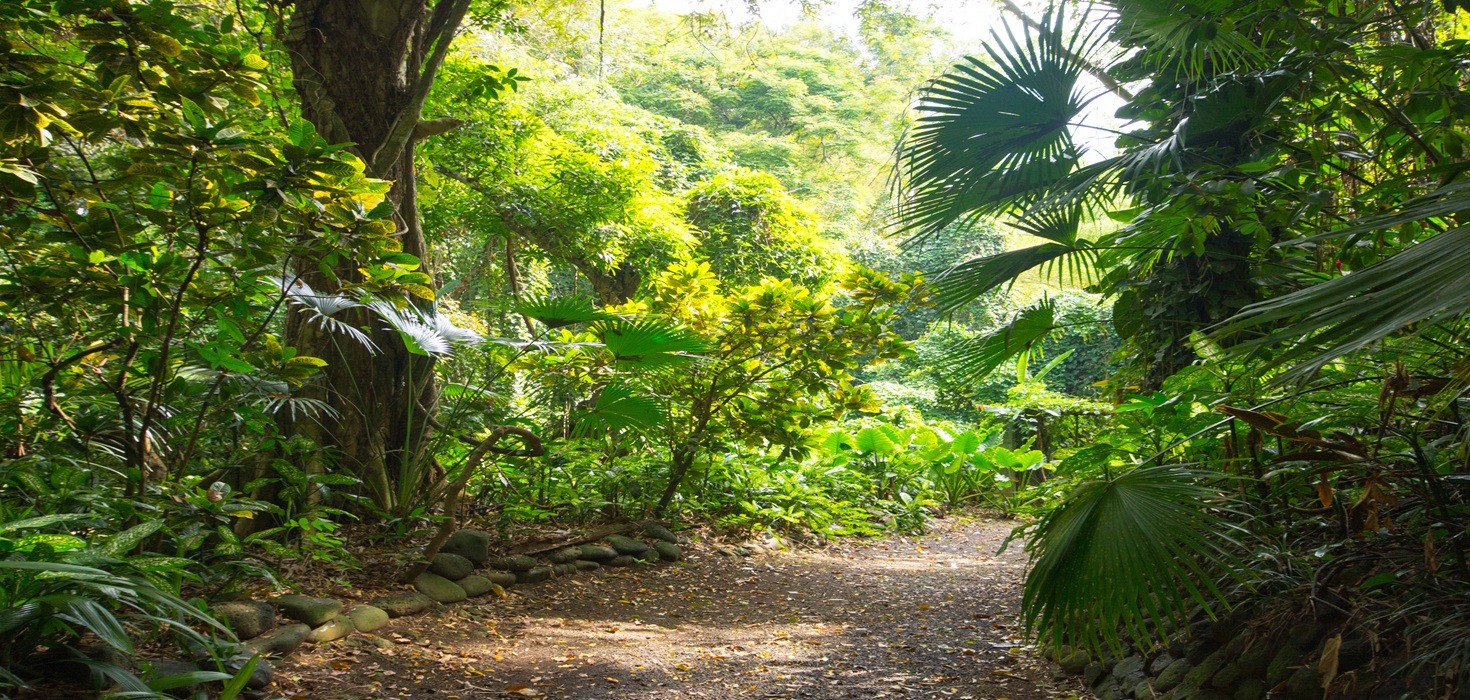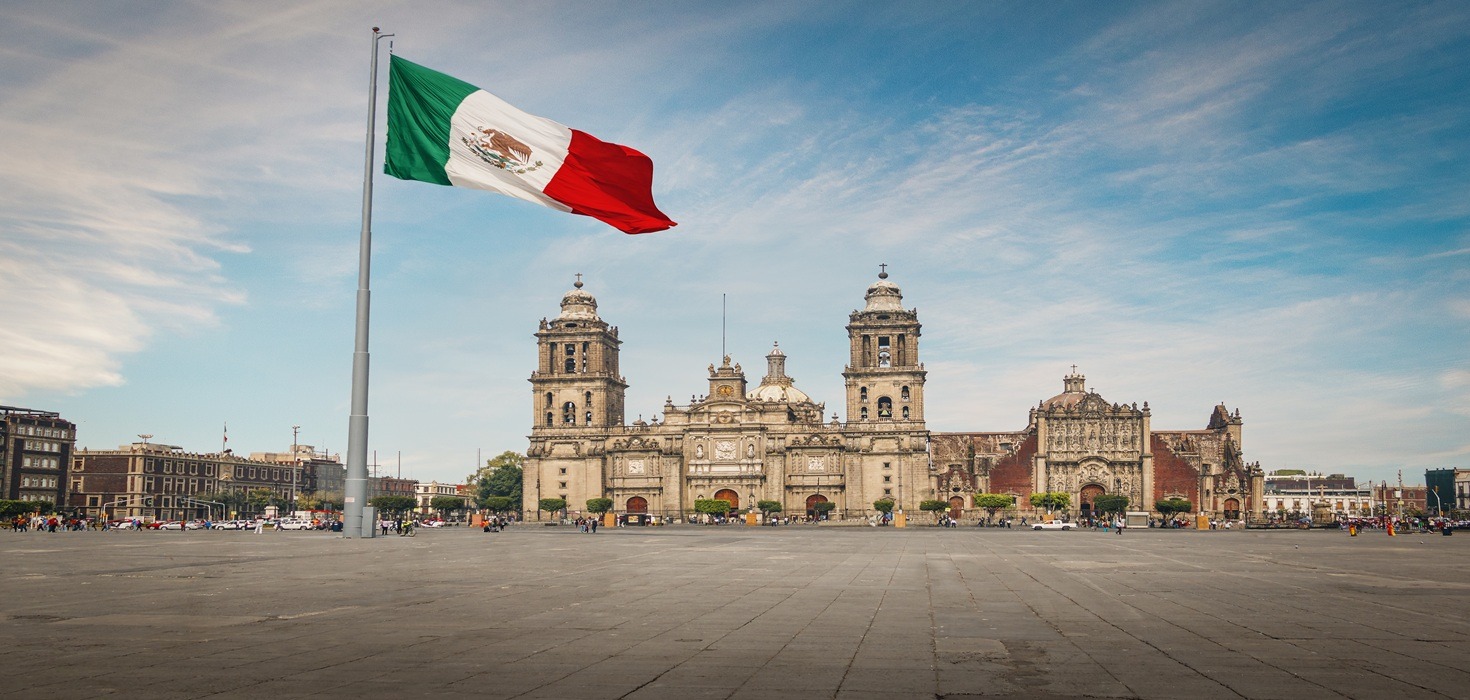Discover the Serenity of Wat Pho’s Reclining Buddha
Stepping into the tranquil grounds of Wat Pho, the air is rich with the scent of incense and the soft whispers of reverence. Here lies one of Thailand’s most iconic treasures—the majestic Reclining Buddha. This breathtaking statue, stretching an impressive 46 meters in length, embodies not just the artistry of Thai craftsmanship but also the profound spirituality that permeates the temple’s atmosphere. As you approach, the sight of the Buddha, draped in gold leaf and adorned with intricate mother-of-pearl inlays, invites you into a world where time seems to stand still.
The Reclining Buddha is more than just a stunning piece of art; it represents the Buddha in a state of Nirvana, reflecting the ultimate goal of Buddhist practice. For many visitors, this encounter is a deeply spiritual experience, a moment to pause and reflect amidst the hustle and bustle of Bangkok. It is a place where you can connect with centuries of tradition and culture, making it a must-visit for anyone eager to explore the heart of Thai spirituality.
Discover the Enchantment of the Reclining Buddha
The Reclining Buddha at Wat Pho is a sight to behold. Measuring 15 meters high and 46 meters long, this magnificent statue is a testament to the skill of Thai artisans. Its serene expression and graceful posture evoke a sense of peace that washes over visitors as they step into the temple’s inner sanctum. The feet of the Buddha, intricately decorated with 108 auspicious symbols, are particularly captivating. Each symbol tells a story, inviting you to ponder the rich tapestry of Buddhist beliefs and teachings.
As you stand before this colossal figure, it’s easy to overlook the architectural beauty surrounding it. The temple complex itself is a masterpiece of traditional Thai architecture, with vibrant murals, golden stupas, and serene gardens that enhance the overall experience. Wat Pho is not just about the reclining Buddha; it is a cultural site that embodies the essence of Thai heritage. This is where you can truly appreciate the fusion of art, spirituality, and history.
For those looking to dive deeper into the significance of this sacred site, check out our comprehensive guide on Discovering Wat Pho: A Comprehensive Guide.
Wat Pho: A Historical Gem in Bangkok
Wat Pho, officially known as Wat Phra Chetuphon Wimon Mangkhlaram Rajwaramahawihan, is one of the oldest and largest temples in Bangkok. Founded in the 16th century, it has long served as a center for education and meditation. The temple is home to the first public university in Thailand, which focuses on traditional medicine and massage. This rich history contributes to its status as a cultural landmark, making it a fascinating destination for history buffs and spiritual seekers alike.
Legend has it that the temple was built on the site of an ancient monastery that housed a revered relic of the Buddha. Over the years, Wat Pho has evolved into a sanctuary for those seeking enlightenment and healing. The temple’s historical significance is palpable, with every corner echoing tales of devotion and artistry. As you wander through the temple grounds, you’ll find intricately designed chedis, beautiful murals, and serene gardens that all tell a story of Thailand’s rich cultural heritage.
To learn more about the historical context of Wat Pho, don’t miss our article on Exploring the Majestic Temples of Bangkok.
Visitor Experience: Making the Most of Your Visit
Planning your visit to Wat Pho can significantly enhance your experience. The temple opens its doors daily from 8:00 AM to 6:30 PM, but the best time to visit is early in the morning or late afternoon. This way, you can avoid the crowds and enjoy a more peaceful encounter with the Reclining Buddha. Entrance fees are quite reasonable, typically around 200 baht, which includes a refreshing bottle of water—perfect for staying hydrated as you explore.
When visiting, it’s essential to dress respectfully. This means covering your shoulders and knees, which is a common practice at most Bangkok temples. Comfortable shoes are a must, as you’ll be doing plenty of walking, and don’t forget your camera! The lighting in the temple is perfect for capturing stunning photographs, especially of the intricate details on the statue and the beautiful temple architecture.
For more tips on making the most of your visit, check out our guide on Discovering the Spiritual Heart of Bangkok.
Nearby Attractions: Beyond the Reclining Buddha
While the Reclining Buddha is undoubtedly a highlight, Wat Pho is ideally situated near other must-see attractions. Just a short stroll away is the magnificent Grand Palace, home to the Emerald Buddha and a stunning example of traditional Thai architecture. The vibrant atmosphere of the nearby local markets also offers a delightful contrast to the serenity of the temple, providing opportunities to sample delicious street food and shop for unique souvenirs.
For those looking to explore even further, consider visiting the nearby Wat Arun, or the Temple of Dawn, which offers breathtaking views, especially during sunset. This stunning temple is a perfect way to round out your day after visiting Wat Pho.
To discover more about the enchanting attractions in Bangkok, check out our article on Uncover the Magic of Bangkok: Must-Do Activities.
A Day Itinerary: Chasing Serenity in Bangkok
Ready for a day filled with awe-inspiring sights and delightful flavors? Here’s a fun itinerary that will help you make the most of your visit to Wat Pho and its surroundings. Start your day early, as the morning light casts a golden glow over the temple, perfect for stunning photographs of the Reclining Buddha and the intricate details of the temple’s architecture.
After you’ve soaked in the peaceful atmosphere of Wat Pho, head over to the nearby Grand Palace. Just a short walk away, this iconic landmark will leave you breathless with its stunning architecture and rich history. Be sure to snap a few pictures of the Emerald Buddha, Thailand’s most revered religious artifact.
Feeling a bit peckish? It’s time to indulge in some local flavors! Walk towards the bustling streets of Bangkok and explore the vibrant street food scene. Try the famous Pad Thai or Som Tum (papaya salad) from a street vendor, and don’t forget to wash it down with a refreshing coconut water.
In the afternoon, take a leisurely stroll along the Chao Phraya River. You can hop on a riverboat and enjoy the scenic views as you glide past historic buildings and local life. If you’re up for a little adventure, consider visiting Wat Arun, known as the Temple of Dawn. Climbing to the top of its central spire rewards you with panoramic views of the river and city skyline.
As the sun sets, head back to the area near Wat Pho. The temple looks even more enchanting at dusk, with the golden lights illuminating the Reclining Buddha. For dinner, explore the nearby local markets for some more delicious street food or dine at a cozy restaurant offering traditional Thai cuisine.
For a complete guide to planning your trip, check out our article on 3 Days in Bangkok Itinerary.
Serene Experiences: Meditation and Spirituality
If you’re seeking a deeper connection during your visit, Wat Pho offers meditation classes that allow you to immerse yourself in the tranquility of the temple. These sessions are perfect for both beginners and seasoned practitioners. Imagine sitting in a serene garden, surrounded by the gentle sounds of nature, while you focus on your breath and let go of the day’s stresses.
In addition to Wat Pho, Bangkok is home to several other peaceful spots ideal for meditation and reflection. The Bangkok Art and Culture Centre often hosts workshops and exhibitions that promote mindfulness and creativity. You might also want to visit Wat Saket, known as the Golden Mount, where you can meditate while enjoying stunning views of the city.
Many visitors have shared their uplifting experiences at these sites, often describing how a simple moment of stillness can transform their perspective. If you’re looking to deepen your spiritual journey, consider taking part in a meditation retreat or wellness retreat in one of Bangkok’s serene locations.
For more insights on spiritual practices in Bangkok, check out our article on Exploring the Timeless Temples of Thailand.
Culinary Deep Dive: Local Flavors Near Wat Pho
Now that you’ve explored the sights, it’s time to tantalize your taste buds! The area around Wat Pho is a food lover’s paradise. From street stalls to cozy restaurants, you’ll find a variety of local dishes that reflect Thailand’s rich culinary heritage.
Start your food adventure at a nearby street vendor where you can savor Thai spring rolls or a bowl of Tom Yum Goong (spicy shrimp soup). For something sweet, try Mango Sticky Rice, a delicious treat that combines ripe mango with sweet sticky rice and coconut milk.
If you prefer a sit-down meal, there are several charming restaurants within walking distance. Riverside Terrace offers a delightful dining experience with views of the river, serving up authentic Thai dishes made with fresh ingredients. Don’t miss out on their Green Curry or Pad Krapow Moo Saap (stir-fried pork with basil), which will leave you craving more.
For a complete guide to the best dining options in Bangkok, take a look at our article on A Comprehensive Guide to Thailand’s Top Tourist Attractions.
Festivals and Cultural Events: Celebrating Thai Traditions
Visiting Wat Pho during a festival can add an extra layer of magic to your experience. Thailand is known for its vibrant festivals, many of which take place in and around Bangkok. One of the most notable is Makha Bucha, a Buddhist holiday celebrated in February or March, where thousands of devotees gather at temples to make merit and participate in candlelit processions.
Another exciting event is the Songkran Festival, the Thai New Year celebrated in April, where water fights and parades fill the streets. It’s a fun and lively time to be in Bangkok, and you can experience traditional rituals, music, and dance.
These festivals not only offer a glimpse into Thai culture but also provide opportunities to engage with locals and participate in age-old traditions. If you’re lucky enough to be in the city during one of these events, be sure to join in the celebrations!
For more information on cultural events in Bangkok, check out our article on Exploring the Majestic Temples of Bangkok.
Practical Information for Travelers
Before you set off on your adventure to Wat Pho, here are some practical tips to keep in mind. The temple opens daily from 8:00 AM to 6:30 PM, making it easy to fit into your schedule. As mentioned earlier, the best times to visit are early in the morning or late afternoon to avoid the crowds and enjoy a more serene atmosphere.
Dress code is important when visiting Wat Pho. Make sure to wear clothing that covers your shoulders and knees, as this is a sign of respect in Thai culture. Comfortable shoes are a must, as you’ll be walking around the temple grounds and exploring the nearby attractions.
For any additional information you might need, including entrance fees and accessibility options, refer to our guide on Discovering Wat Pho: A Comprehensive Guide.
Transportation Details: Getting to Wat Pho and Beyond
Getting to Wat Pho is a breeze, thanks to Bangkok’s efficient public transport system. If you’re coming from the city center, you can take the BTS Skytrain to Saphan Taksin Station and then hop on a riverboat to Tha Tien Pier. From there, it’s just a short walk to the temple.
If you prefer a more direct route, taxis and tuk-tuks are readily available. Just make sure to agree on a fare before you start your journey. For those who enjoy cycling, renting a bike is a fantastic way to explore the area and discover hidden gems along the way.
For more tips on transportation in Bangkok, check out our article on Uncover the Magic of Bangkok: Must-Do Activities.
Seasonal Travel Insights: Best Times to Visit Bangkok
Bangkok enjoys a tropical climate, which means it can be hot and humid year-round. The best time to visit is typically between November and February when the weather is cooler and more comfortable for exploring. This is also peak tourist season, so expect larger crowds at popular attractions like Wat Pho.
March to May can be quite warm, but it’s also the time for some fantastic festivals, including Songkran. If you don’t mind the heat and want to experience the local culture, this could be a great time to visit.
During the rainy season, from June to October, you’ll encounter occasional downpours, but this is also when the city is less crowded, and you can find great deals on accommodations. Just be sure to carry an umbrella!
For more insights into planning your trip, check out our article on 3 Days in Bangkok Itinerary.
Safety and Health Guidelines for Travelers
Your safety and well-being are paramount while exploring Bangkok. As with any major city, it’s wise to stay alert and be mindful of your belongings, especially in crowded areas. When visiting temples, practice good hygiene by washing your hands frequently and using hand sanitizer.
It’s also a good idea to stay hydrated, especially during the hot months. Drink plenty of water and take breaks in the shade when needed. If you’re planning to try street food, choose vendors that are busy with locals, as this often indicates freshness and quality.
For more health and safety tips while visiting Bangkok, refer to our guide on Discovering the Spiritual Heart of Bangkok.
Commonly Asked Questions (FAQs)
As you plan your visit to Wat Pho, you might have a few questions. Here are some common inquiries that can help enhance your experience:
- What is the best time to visit Wat Pho? Early morning or late afternoon is ideal to avoid crowds.
- Is there an entrance fee? Yes, the entrance fee is typically around 200 baht, which includes a bottle of water.
- What should I wear? Dress modestly with shoulders and knees covered.
- Can I take photos? Yes, photography is allowed, but be respectful of worshippers and the sacred space.
- Are there any guided tours available? Yes, many local guides offer insightful tours around Wat Pho and nearby attractions.
For more answers to your questions, check out our article on Exploring the Timeless Temples of Thailand.

